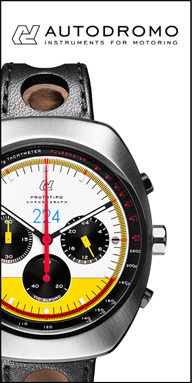Car Myth #1: "You want a low mileage classic. High mileage means trouble!"
 Monday, December 17, 2012 at 6:14PM
Monday, December 17, 2012 at 6:14PM Welcome to a new series I have decided to start, entitled Car Myths. After being around the collector car world a little while, I am really getting sick of the group think and uncritical approach many people take to evaluating what cars are desireable and what cars are not. I decided to start a series that attacks many of the common myths I hear over and over again in online forums as well as at car events.

Myth #1: How many times have you heard the following? "You want a low mileage classic. The lower mileage the better. High mileage classics are trouble!"
FALSE!
Cars are no different from humans and animals. They need to move. They are designed to move. A sedentary life causes hardening of the arteries and creaky joints in people. The classic car is no different. I frequently see a well maintained, high mileage exotic being discussed on online forums, and people are obsessing over the mileage topic. “That 1984 Ferrari has 60,000 miles on it!” people will gasp. “I Wouldn’t touch it!” My response to this hysteria is: So what??
The truth is that higher mileage classic cars, if well maintained, are more likely to be reliable because they are regularly driven, plain and simple. Parts that may have been faulty have long since been replaced with new ones. Gremlins that may have afflicted the car when new have been sorted. A driven car is a car that has been known and understood by someone. When I bought my Dino, I was not put off by the fact that it had about 88,000 miles on the odometer. I was encouraged by the fact that the previous owner cared deeply about the car and spent whatever needed to be spent sorting the car after he acquired it. The engine was rebuilt, and had only 2,500 miles on it since the rebuild. I still had to do the timing belts, but that was to be expected. The car has proven (after one initial teething problem) to be totally reliable and trouble-free. And it looks sensational. So the actual odometer miles, to me, are irrelevant when one considers the maintenance history and the previous owner’s personality.
Obviously, if the previous owner abused and trashed the car at the track, one should keep walking. But one can also abuse and neglect a car by never using it. Low mileage cars may be attractive in theory, but in effect, letting a car sit for extended periods actually ages the car more than driving it. Sure the paint might be better preserved, and the driver’s seat might have less wear (On the outside! The inside will be basically turned to dust.), but these are the easiest things to refresh. Meanwhile, all the rubber parts will be dry rotted, the seals will be dried out and the gaskets will be of questionable integrity. Basically, you are buying into someone else’s deferred maintenance, and with something like a V-12, that deferred maintenance is going to bite you in the wallet. Hard. Would you want to trade bodies with someone who went for a jog every morning, or someone who sat on the couch all day? Exactly.
If low mileage cars are problematic, then why do so many people desire them? There is a simple answer to that which is plainly obvious. As has been discussed many times in popular culture, the acquisition of a sports car for many men is a sublimation of their sexual urges, and acquiring a low mileage car is subconsciously related to the idea of possessing a younger woman who is “fresh.” You may laugh, but you know I am right. Buying a high mileage car is for some men just not something they can bring themselves to do simply because they don’t psychologically feel comfortable with taking over someone else’s well-used toy that shows the evidence of its enjoyment by someone else. They want something untouched. A Virgin. That is why the mystique of the “time capsule” or the “barn find” car is so alluring—far more so than a restored car. It offers the illusion of purity, the idea that the new owner will possess something that hasn’t been sullied by prior owners. The term “Sleeping Beauty” sums this up perfectly, wouldn’t you say? Of course this is unmitigated Bullshit, and most barn find cars are basically piles of junk needing complete mechanical overhauls!
As for me, when I look at buying a car, of course I have to be in love with the car. But at the end of the day, I still view the car as a machine or even as a historical artifact that needs a custodian. I don’t really care who owned it or used it. I just care about condition and maintenance records. The key to buying the right car has little to do with odometer mileage and everything to do with the maintenance records. If a seller doesn’t have records or refuses to show you them, then you need to walk away immediately. The maintenance records are the rosetta stone with which you can decipher the true condition of the car and see what its problems have been in the past, and how old critical components are. If you approach a car like that, you may acquire great cars other people aren’t interested in and get a hell of a deal in the process. That’s exactly how I got my Dino. Just do your homework and look at the records, meet the owner in person, and don’t fixate on the odometer! If the classic car community wants to pay top dollar chasing imaginary virgins, let them. Over time, your well-loved car will still hold its value and give you a lot less grief when it comes to maintenance.
PS Just for the slow of mind, this article pertains to classics over 20 years old. Obviously buying a 5 year old car with high mileage is a different kettle of fish...

